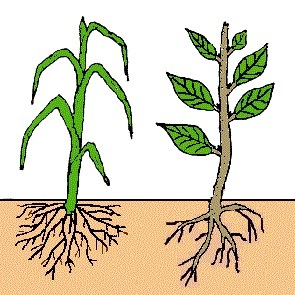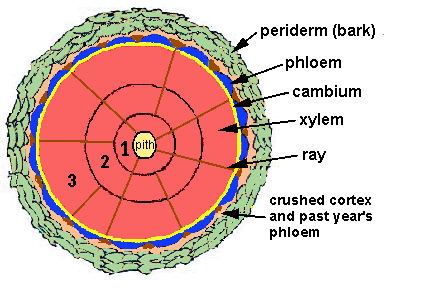Monocot vs. Dicot

Monocot vs. Dicot
How do you tell the difference between two plants? Do you compare the shapes of the leaf or the type of stem? What about the different colored flowers?
The act of separating plants into different categories is called classification. Classification is used to identify and organize the different types of plants in the world. Scientists created a way to organize plants so they would keep track of them. There are two very important types called Monocots and Dicots that you will be identifying in this activity.
Click on the tabs under each title to learn more about Monocots and Dicots!

Monocots
The word Mono- means one. Monocots get their names from having one cotyledon. A cotyledon is the part of the seed that will grow into the leaves.

Monocot can be identified by their flowers parts. The flower parts on a monocot plant come in multiples of 3!

Monocot leafs have parallel or up and down veins.

Monocot stems have scattered vascular bundles. Vascular bundles are the veins of the plant, they carry nutrients and water up and down the stem.


Dicots
The word Di- means two. Dicots get their names from having two cotyledons instead of one.

Dicot flower parts come in multiples of 4 or 5. Count the petals and identify whether they are multiples of 4 or 5!

Dicot leafs have veins that are scatter or “netted.” This means they do not follow a pattern.

Dicot stems are normally woody. Here we see a section of a tree, the rings of a tree contain the old veins called xylem(z-i-lum) and phloem (flo-um).


Now it’s your turn! Print out the activity page and follow the instructions. Use the knowledge you just learned to help you collect some examples of a Monocots and Dicots!

